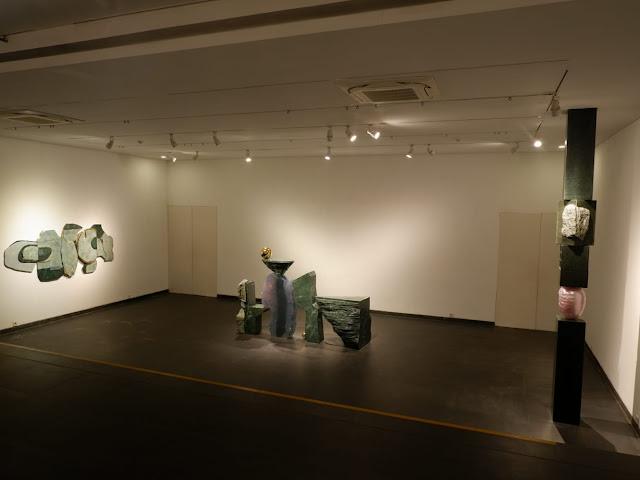.jpeg)
Rizki A. Zaelani :
Contemporary art is not only about the evolution of trends but also about the skills to bring art to life, as well as the changes in contemporary circumstances. Contemporary art is inevitably linked to the growth of a situation of consolidation of attitudes of doubt—doubt about various aspects concerning art as well as life. The term "contemporary art" is marked by the meaning of its abundant use, surpassing its interpretation of being merely about specific contemporary circumstances. In practice, the meaning of this term has absorbed the interests of various groups and certain forms of resistance; the whole concept becomes a matter of "multiple contemporary circumstances" (Gillick, 2016: 2)
Art in the form of the latest developments is now a product of complex events, the result of the construction of various personas and the forms of various individual critical tendencies. In essence, art is a form of fragmentation and at the same time grows into a more subjective tendency. Contemporary art is nothing more than a repository or warehouse for various ways of recognition and self-desire. At the same time, this flow can also be recognized as a symptom of the increasingly developing tendency of self-awareness to "challenge" other forms of art. The challenge for the development of contemporary art today, therefore, is clearly how to express a proper combination of circumstances: clarity, resistance, reference, and at the same time about the condition of subjectivity (Gillick, 2016: x).
.jpeg)
"At this point, Gabriel's sculptures become interesting: on the one hand, he uses various types of materials, stone, metal, and resin, which allow the public to immediately recognize them.
Gabriel uses the resin medium, as a synthetic material, to create a relationship between materials with natural properties (metal and stone) and cultural materials (resin) produced by industrial processes.
However, on the other hand, Gabriel also creates a composition of forms and results of formations that are actually 'distant' from the public's memory of the material, which is usually found as certain objects in everyday experience.
The tension between these two sides, between the 'known' and the 'unknown', contributes to the expressive power of Gabriel's sculptures.
As a sculptor, Gabriel knows that his way of connecting the tension of these two differences is related to the points of knowledge flow that are in the development of sculpture itself. "
Contemporary Sculpture?
The term "contemporary art" is used differently by various parties with diverse agendas. These interpretations can not only differ but also often contradict each other. Unlike previous art eras, contemporary art no longer obsesses over defining clear boundaries to clarify the current artistic landscape. Instead, it embraces the notion that "anything goes" and that meanings can be both simultaneous and contradictory. In practice, the definition of contemporary art that applies to one artist often differs from that of others. An artist, with their primary concerns, is responsible for creating perceptual objects that are recognizable and relevant to a legitimate mode of understanding, thus establishing their work as art (Strayer, 2007:3). These legitimate modes of understanding will continue to evolve (to encompass the dynamic scope of issues) and be discussed (to enrich the referencing tradition) to distinguish art objects from other non-art objects.







Comments
Post a Comment